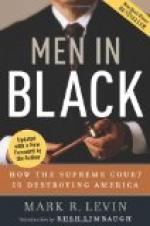The object is to show to the judge and jury what the drama is about. The secondary object is to arouse interest. Immediately after the opening comes the evidence, which is usually bald, fragmentary, and disconnected. It might be impossible for the jury to understand the relation of one bit of testimony to another. Take a simple case such as a suit for the failure to pay a bill at a dry-goods store. One witness testifies to the sale, another to the packing of the goods, another to the delivery; a receipt is introduced in evidence. Each one would not tell a connected story. The opening outlines the facts and makes the evidence understandable. It also has the function of an appetizer. This may seem a trifle unnecessary. But let us take an illustration. A whole case may depend upon a deed. If the paper itself were put in and read to the jury without explanation they would be bored. One witness is to tell this part of the story, another that, and the missing link of the chain may be supplied by the deed. The jury are not to be mystified before their interest is aroused. Are not the lives, property, or reputations of particular men at stake? The ordinary man and even more the average juryman has far too strong a sense of responsibility to be bored if truly he can understand what it is all about. The function of the opening is to tell him.
As the counsel begins opening every juryman leans forward and watches him intently. They feel their responsibility as officers of justice and there have been few complaints of their falling asleep during the trial. The jurymen have come to know the names of the opposing lawyers and the faces of the clients, if they have been pointed out during the examination of the jurors, but nothing more. Are the jury to hear a story of bitter resentment or of passion and crime, or a calm demand for the payment of a debt? The opening will show.
Did the plaintiff during years of effort build up a business and take the defendant in as a partner only to be defrauded by him? Plaintiff’s attorney will indicate the years of effort briefly, but impressively, before sketching the manner in which the defendant stole from him by fraud the fruits of his labor. When the plaintiff then testifies that in 1890 he opened a small store in Fourteenth Street, moved in 1896 to Twenty-third Street and thence in 1916 to an up-town street off the Avenue, the dates will sink into the jurors’ minds and they will portray for themselves the twenty-six years of painstaking effort. No eloquence then could rival the effect of the witness’s slow, bare recital of his progress. Yet without counsel’s prologue what could be more dull than the naming of street numbers and dates?
The matter of the testimony may be interesting, but unless the witness has a rare gift of expression and a sense of the picturesque, the way in which it will be given may be dull and plain. But at this point the little keen-faced lawyer for the other side jumps up and interrupts: “I object, your Honor; what difference does it make where he lived in 1890, whether on Fifth Avenue or Mulberry Bend? What we want to know is what he is suing for now.” And the court will probably rule with him and keep the plaintiff down to more relevant facts.




